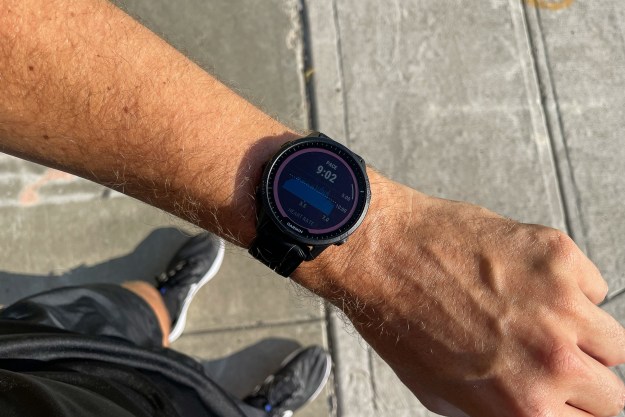At any given moment there are approximately a zillion different crowdfunding campaigns happening on the Web. Take a stroll through Kickstarter or Indiegogo and you’ll find no shortage of weird, useless, and downright stupid projects out there – alongside some real gems. We’ve cut through the Pebble clones and janky iPhone cases to round up the most unusual, ambitious, and exciting projects out there this week. Keep in mind that any crowdfunded project — even the best intentioned — can fail, so do your homework before cutting a check for the gadget of your dreams.
The Fish Call — Electronic fish bait
We’re not 100-percent sure if this one is legit, but hear it out: The Fish Call is basically like a duck call or a moose call, but designed fish. Now, I know what you’re probably thinking. Fish don’t have a “call,” so this is obviously snake oil, right? That’s what I thought too, but after reading through the Kickstarter page a bit and doing some quick Google research, I’m starting to think this might have some merit to it.
Supposedly, the Fish Call works by emitting a series of vibrations and sounds that mimic those created by a school of feeding fish. When fish sense these sounds, they instinctively swim toward the vibrations to see what all the hubbub is about. The idea is that you toss this sucker into the water, wait for the fish to swim up and investigate, and then cast your line out next to the device. If the Fish Call works as advertised and your casting skills are up to par, your bait will presumably land smack in the middle of a hungry school of fish — drastically increasing your chances of landing one and pulling it back into the boat.
Morpheus — LIPS 3D printer
Normally, there’s so many printer projects on Kickstarter at any given moment that I hardly bat an eye when a new one is announced — but Morpheus is something different. Instead of melting plastic filament to create objects layer-by layer, it employs a technique known as stereolithography (SLA), wherein laser light is used to “grow” objects out of a pool of UV-curable resin. However, unlike most SLA printers, which basically trace out shapes with a laser beam, Morpheus speeds up the process with a technique the creators call Light Induced Planar Solidification.
It sounds super fancy and complicated, but LIPS is really just a dressed-up way of saying the printer uses a projection system to create one entire layer of an object at once, instead of tracing a small laser dot over the area that needs to be solidified. In theory, this is considerably faster and more effective than the methods that most SLA printers employ. And to sweeten the deal even more, Morpheus also has one of the biggest print volumes of any SLA printer we’ve ever seen, measuring in at a massive 33 x 18 x 30 centimeters.
Knife Edge Bit — Driver for damaged screws
If you’ve ever used a Philips screwdriver, you know firsthand just how frustrating they can be. Turning a screw seems like a pretty straightforward task, but one false move and your Philips bit will push itself out and destroy the screw head right before your eyes. Ever wonder why this happens? It’s because that’s exactly what Philips bits are designed to do. Invented in the 1930s for use on automotive assembly lines, Phillips bits were designed to deliberately “cam out,” or push themselves out of the screw at a certain point so that they wouldn’t destroy the screws or the cars on the assembly line.
Thing is, we use them for a totally different purpose now, and the fact that Philips bits tend to “cam out” is more annoying than it is helpful to most users. To remedy this problem, Portland-based inventor Dan Pinckard has developed an ingenious new Phillips bit, dubbed the Knife Edge, that not only prevents cam out from happening, but also allows you to turn damaged and otherwise unusable screws. The bit’s unique geometry causes it to dig into the screw head and lock in place when lots of torque is applied, so instead of slipping out and stripping your screw, it actually gets tighter. Check out the video!
Livall — Smart bike helmet system
There’s no shortage of smart bike helmets in the world these days, but this one is probably the smartest and most tricked-out we’ve seen yet. Not only does it have lights and turn signals, but it’s also packed with sensors and communication tech. Tucked inside its protective hull, a built-in 3-axis G-sensor lets the Bling helmet detect falls by reporting unusual deceleration — a.k.a. crashes. The accompanying mobile app then automatically sends an S.O.S. to your preset emergency contacts.
Of course, the idea is to avoid accidents altogether, so forward-facing colored LEDs keep you visible in rear view mirrors, while rear LEDs sweep back and forth like KITT’s iconic scanner bar. They serve as tail lights, plus can work as turn signals if you have the right peripherals. The Bling Helmet’s built-in “windbrake” mic lets you answer calls without that deafening background whistle. The Bluetooth speakers positioned above the ears let the helmet take the place of headphones, since you can both hear your calls and listen to music stored on your phone. The helmet also has a walkie-talkie function for direct helmet-to-helmet communications.
SmartPrompt Pan — Intelligent skillet
There are two kinds of people in this world: those that can cook, and those that tend to burn anything they put on the stovetop. If you’re one of the latter, making your own meals is a struggle — especially when you’ve constantly got to run out of the kitchen to wave a blanket at the smoke alarm. But there’s still hope for you. The SmartPrompt Pan is a freshly launched Kickstarter project that aims to make stovetop cooking completely foolproof. On the outside it looks and feels just like any other frying pan (save for a touchscreen on the handle, but under the hood it’s got a few tricks that make it smarter than your average skillet.
In addition to a temperature sensor embedded in the center of the pan, Pantelligent is also equipped with a Bluetooth LE radio in the handle, so it can relay temperature data to your phone or tablet. Once you’re all synced up, the pan’s on-board display can tell you how hot the pan is, how hot it should be, and even let you know when it’s time to add ingredients, stir, or flip. All you’ve got to do is follow the alerts and adjust the heat of your stove as directed. SmartPrompt’s software knows the ideal cooking times and temperatures for a myriad of different foods, so as long as you can follow directions, you’ll end up with a perfectly cooked dish every time.



